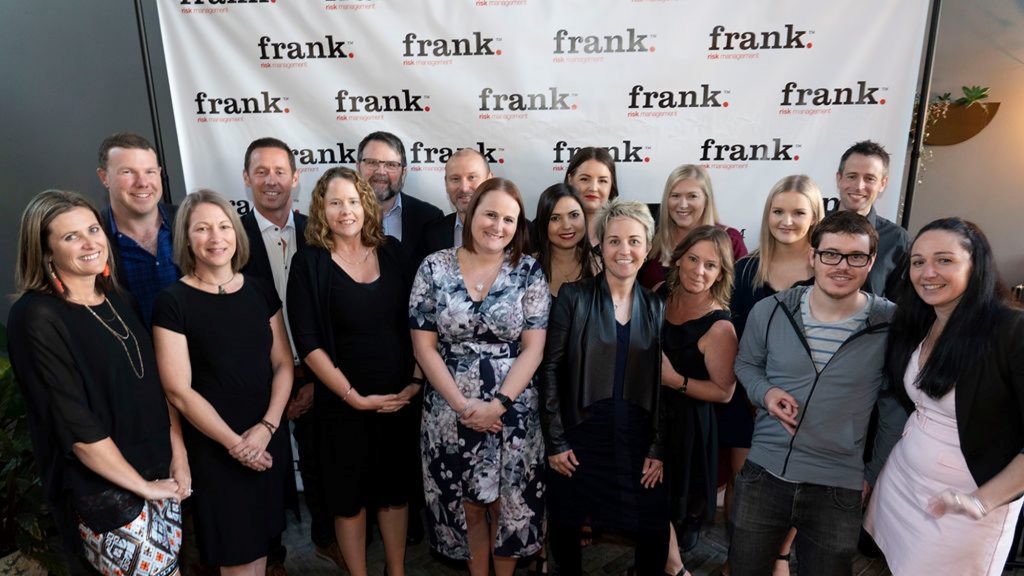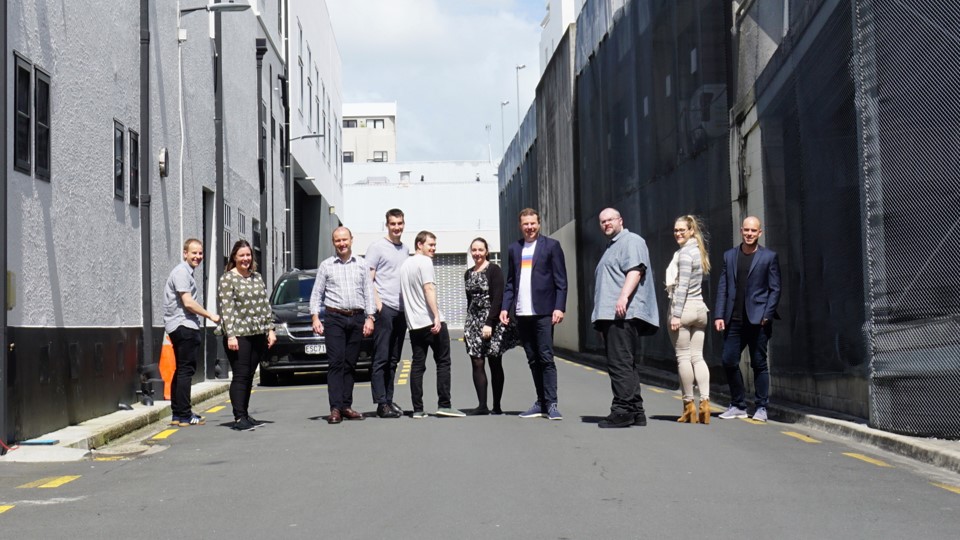Insurance for the tomorrow’s customer – Rene Swindley- ICNZ Conference 2019
Having started a company that challenged the way things have always been done in insurance, our director, Rene Swindley, who is the recipient of the 2018 Young Insurance Professional of the Year, was asked to speak to the 2019 Insurance Council of New Zealand Conference on how insurers need to change to meet the expectations of tomorrows insurance buyer. Here is the abridged transcript of his presentation.
Young insurance professional view
I turn 35 this month so I’m no spring chicken… but I’m arguably still very young by industry standards (something I would love to see change).
After finishing Law school, at 23 years of age, I co-founded a company called Frank… so I suppose you could say that I’ve taken an immature approach to insurance over the last decade. Back then I had a lot more hair, a lot less stress, and couldn’t understand why insurance was so clunky.
The early days (2009) – Tristram Street, Hamilton
It was this Naïve approach to insurance that has allowed us to challenge the way “things have always been done”.
By way of background Frank Risk. Is our Commercial Insurance Broking brand – it rebates commissions to clients and charges a disclosed fee for service, and this approach removes the conflict of interest most other brokers face. From its inception 10 years ago Frank has challenged the market to do insurance the way we do.
Frank Risk (Nov, 2018) – Celebrating 10 years in business
Frankie is the digital version of Frank – we built this in-house to be a client-facing tech lead platform for business insurance.
Initio is our domestic brand – it’s a digital provider of domestic insurance (houses, contents). The platform, which we built from scratch, is a full on-demand, customer-facing quote, bind, manage, claim online. It’s customer-centric and it’s faster, easier, smarter. It was the first of its kind in 2011, and back then insurers were in denial about tech lead custom driven insurance….. These days they call it “Insuretech”.
So with that background on how we’ve been trying to effect change for the benefit of the customer – here’s my opinion on how we (the industry) needs to change for the next generation of insurance buyers:
Initio (2019)
How insurers need to change
Insurers need to provide value
Tomorrow’s customer is buying on value – not price or $50 pressie cards. They want an insurer that provides flexibility, provides assistance with managing risk, and communicates with them in plain English.
So let’s cut the jargon, let’s give the customer control, let’s help the customer reduce risk.
We are starting to see examples of insurers and tech companies providing tools for managing the things people own. Trov in the US pioneered single-item, micro duration insurance. The founder, Scott Walchek asked ‘What would happen if you could give individuals control over the information about their things’. What happens is the customer sees value in the relationship with their insurer as it departs from a pure transactional relationship.
Value for the business customer is by way of tools that help to identify their commercial risks in real-time – I’m talking about connected devices that tell a line manager that a steel saw is becoming blunt and causing heat. Insurance becomes secondary.
The provision of value like this is just the beginning. The buyer of tomorrow won’t be thinking of insurance as a primary service – it will be secondary to the provision of other core business tools and personal management strategies.
Make insurance accessible
Insurance lags way, way behind millennial’s expectations of obtaining intangible services.
For a product that does not need to sit on a shelf, has no physical logistics associated with it, and for many risk lines, has no short supply issues – insurance is nowhere near as accessible as it should be.
We need to change to adapt to the buying and living patterns of the next generation, which means on-demand insurance cover that’s also available at point of sale, and aligns intricately with how the customer works, lives, eats, plays. What I’m proposing is a policy of the future that wraps around the customer not what they own. Just imagine an insurance world with fewer policies and less fragmentation.
One of the reasons insurance is not as accessible is it should be is because of the human factor. Let’s get smarter about this and use computing power not humans to do the soul-destroying processing work for no complex risks. I challenge you to work out how many humans need to be involved in a single material damage placement. I’m guessing its 6+.
Increase the trust
Insurers don’t trust their customers, and customers don’t trust their insurers. By any relationship standard – that’s a pretty bad one.
The next generation of insurance buyer wants to trust their insurer and they want to be trusted.
Let’s compare it to the taxation system in New Zealand. It trusts the end-user implicitly. For example – with a GST return, if you claim a cash refund [by disclosing that your GST collected on sales income is less than the GST paid on expenses] you receive the refund to your bank account – no questions asked. But god help you if you are dishonest. It’s a trust everyone until proven otherwise approach – and it works.
That used to be the way insurance worked (absolute good faith – uberiemae fidea) but it seems to have evolved into a “prove your loss” approach including proofs of purchase, photographs, assessors, investigators – all at great cost.
I totally accept that insurance fraud is a real issue – but there are smart ways to combat this. We are seeing examples of how technology and analytics are providing huge value gains here. Insurers are using anti-fraud algorithms to detect fraud and some US insurers are employing social scientists and psychologists to senior positions in their companies so that they can understand the mentality of their customers and build it into the technology.
So, in short, the industry’s current approach does not align with the expectation of what a millennial expects of their insurance experience.
As an industry, we can also increase trust by getting rid of the ‘black box’ stigma of insurance. We all know insurance but the customer doesn’t. We can start but introducing smart, searchable, plain English wordings. Wordings that are opensource that are a collaboration between the insurer and the buyer is my vision here. Tomorrow’s buyer doesn’t want a ‘gotcha’ moment. The next generation wants to contribute to how their policy is built – and for that insurers will get respect, earn trust, and have a customer for life.
Education also increases trust. Everyone believes that there’s a pot of money for earmarked for them. “I’ve been a customer for 20 years and I’ve never Claimed”.
I even had someone say to me the other day “I’ve just returned from overseas and all went well – no issues, do I still need to pay my travel insurance premium”
These comments seem odd to people who are in the insurance industry but I can’t emphasize enough that there is a widespread misunderstanding among customers of how insurance actually works. And this isn’t the fault of the customer – the insurance industry is the one who has dropped the ball here.
We need to teach customers that insurance is, in fact, a community-based pooling of resources administered by an organization [an insurer] who charges a margin for the privilege.
Know your customer – Know your data
Tomorrow’s insurance buyer expects that their insurance provider knows them and their stuff intricately.
The next generation expects this because they have willingly shared personal data with their insurer (and in many cases the public at large) already.
So to this end when they make a claim they don’t want to be asked how old they are or what their name is. Think about the current claims process… “Here you go customer – please repeat everything we already know about you on this manual form”. Not a great experience.
And when it comes to starting insurance, the things they own are data mapped and the next generation knows this. So let’s not ask the customer how many KM’s their vehicle has done or how susceptible their house is to flood.
Often the customer struggles with accuracy on these pieces of information and there is a fear that if they get them wrong they will invalidate their insurance. So, let’s NOT put that responsibility on the customer when we all have data we can access already. My point here is that its the insurer’s responsibility not the customers
I think as an industry we have been missing the real opportunity here. Data is where the real value is – and it’s a huge opportunity to impress our customers. Once you have data the sky is the limit, and insurers are the biggest data houses in the world.
You may have heard all the buzz words like AI, machine learning, and blockchain. But put simply we need to find patterns in the data and share this knowledge with the customer. Transparency breeds loyalty.
To recap the insurance buyer of tomorrow wants:
We can be smart with technology and achieve all of these things



